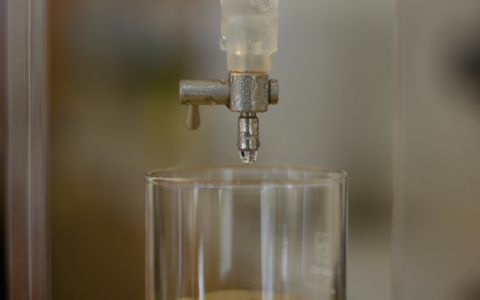Mercury was detected in products sent for testing from India, Kenya, and Mexico in research undertaken by international network of civil society organizations IPEN. In Mexico, products containing 0.8 ppm were found, in one skin lightening cream a mercury con-tent of 1325 ppm was analyzed. It was the highest level. It is only one of the results of broader research presented in recently released report "Market analysis of some mercury-containing products". Arnika has coordinated the work on this report on behalf of IPEN.
Mercury was detected in products sent for testing from India, Kenya, but contents were below the limit of quantification (0.07 ppm). Mercury likely was present as a contaminant from other ingredients. In Mexico, products containing 0.8 ppm were found, in one skin lightening cream a mercury content of 1325 ppm was analyzed.
Full report: "Market analysis of some mercury-containing products"
The Report
The report has been funded by the German Federal Ministry for the Environment, Nature Conservation and Nuclear Safety (BMU). The work has been conducted by the International POPs Elimination network (IPEN) and the Gesellschaft für Anlagen- und Reaktorsicherheit (GRS) mbH. Arnika has coordinated the work on this report on behalf of IPEN.
Objectives of the study
The goal of this project was to gather and analyze information related to the availability, suitability and cost of mercury-containing versus mercury-free mass products in developing countries (DCs) and countries with economies in transition (CiTs).
Methodology
In order to have a broad picture of the global situation, two countries were selected to represent each of four UN regions.
Tab. 1 Countries Involved in Surveys
| Africa | Asia | Eastern Europe | Latin America |
| Kenya | China | Kyrgyzstan | Brazil |
| Senegal | India | Russia | Mexico |
In each of these countries local non-governmental organizations (NGOs) carried out the survey in two or more selected major cities according to prepared questionnaires.
The study gives an overview about selected mercury-containing products and their mercuryfree alternatives in the above specified countries. The following widely-used consumer products were considered under this approach:
- thermometers and blood pressure meters used in hospitals and medical practices,
- thermometers for use in the home,
- skin-lightening products,
- common batteries and
- dental materials used for restoring teeth.
Information was gathered via interviews with local retailers, health care workers, professionals and consumers. Because of the rather limited number of interview partners per country (mostly between 10 and 25) the survey does not claim to give a representative picture of the individual countries. It should be understood as a first impression that allow for the identification of general challenges related to mercury-containing products.
Results were tallied and in addition, samples of batteries and skin-lightening products were collected and sent to GRS for further analysis.
Awareness
From the surveys, respondents offered a wide range of reactions regarding awareness about, and the availability of, products that traditionally - or continue to - contain mercury. In addition, the survey identified a wide variability among the countries in their efforts to address the production, sale, and use of those products.
Dental and health care professionals, some of the most highly-educated individuals in any country, are well-respected by the public as a source of information on public health issues. In every country surveyed, they were extremely knowledgeable about mercury’s toxicity and potential impacts on health. The survey found virtually total awareness and understanding among dental and medical professionals (90 % - 100 %) on mercury’s toxicity with very little belief that mercury’s threat was overstated. The only exception was one Asian country where all interviewed dentists know that mercury is toxic, but only slightly more than 50 % were aware of the risks posed by it to human health an the environment. In most instances, the ability of dentists and doctors to speak about mercury issues was compromised by their use of mercury in their everyday practices.
Consumer knowledge about mercury often paralleled the strength of policies present for addressing its use. In countries where mercury content restrictions were placed on products and/or the government either certified mercury-free or required mercury-free, citizens and merchants showed often greater awareness about mercury’s threat and the presence or absence of mercury in consumer products when making their choices for purchase.
Another segment of the population that regularly interacts with consumers, retail merchants, were only aware of mercury’s presence or threat where the presence of either a regulation, government instituted seal or an implied mercury-free production credential was given to manufacturers of a of well-renowned product label. In these communities, the merchants were quick to claim mercury-free benefit and tout the benefits of a safe and healthy product.
Thermometers
While mercury-containing thermometers were still used more often, mercury-free thermometers were in wide use in hospitals and doctor offices in most countries surveyed. Especially in Asian countries mercury-free thermometers were in use in only about 25 - 30 % of all visited hospitals and doctors practices, in one country there was found no substitution at all. Ease of use, durability and safety issues were the greatest attributes recognized for mercury-free thermometers. On the other hand, they were criticized for their high cost and lack of consistent and/or accurate readings. Health care professionals cited budget restrictions as the barrier to wider procurement and adoption for use in major hospitals. For lower-end mercury-free clinical thermometers health care professionals stated prices of mostly 3 - 5 times the price of cheap mercury-containing thermometers, but in some countries the prices given were 9 to 20 times higher for the mercury-free alternative. Purchases of low-cost items may have initiated backlash against their adoption. Availability also hampered wider adoption in some countries.
Also noted in a significant number of the responses was the vast number of mercurycontaining thermometers that were broken in the course of daily routines in hospitals. One survey indicated over 4700 thermometers were broken in one year at a 250 bed hospital. Clean-up and management of broken mercury fever thermometers were also cited as a major issue in another country where these were still used.
Mercury-free thermometers for the home were readily available in 45 to 100 % of the surveyed retail outlets, depending on the country. But cost was a major barrier to adoption here as well. Depending on the country, for the cheapest mercury-free thermometer, costs ranged from about twice to 5 times the price of a mercury-containing thermometer, for the more expensive offerings, price ranged up to 70 times the cost of the most expensive mercury-containing fever thermometers. Merchants were indicated to stock these items due to their high price knowing some would be purchased and give them greater profit. Even in areas where hospitals had problems getting mercury-free thermometers, merchants were able to stock these items on their shelves.
Sphygmomanometers
Mercury-free blood pressure meters were generally available in all countries (100 %), but in one country it was stated that the alternatives are only stocked at few places. The major concerns raised about them related to accuracy. Least expensive offerings were similar in price or slightly more. In two countries, where mercury-containing meters had been banned for many years, no physicians cited cost or accuracy issues as a problem.
Batteries
Mercury-free batteries (at least cylindrical batteries) were also available in all countries (100 %). Most were either imported from countries restricting mercury use or from manufacturers in developed countries. No sign of increased price for mercury-free batteries was present in any country, but often only mercury-free (cylindrical or button) batteries or batteries with mercury could be found in one country besides unlabeled batteries. In some countries selection and/or labelling was limited, but not for most. Regarding consumer awareness through product statements, only about 40 % of all batteries made mention on the batteries or packaging that they were mercury-free, an additional 15 % indicated they contained mercury. Overall, more cylindrical batteries (~ 60 % of D-cell) had statements about mercury content than button (~ 25 % of LR-44) batteries.
Skin lightening products
Mercury-free skin-lightening products were claimed by users and merchants to be present in every market and widely stocked in stores, pharmacies, and cosmetic clinics. Some concern was raised about the time it took to achieve results. Beside very few exceptions products had generally no claims as to mercury content. The surveyors were told in several countries, that illegal sales (black market products) exist, but in spite of local efforts, these products could not be widely procured. In one developing country one of the analyzed products had a very high mercury content (up to 5 wt %). Here, a mercury compound is obviously the main active agent. Another 12 % of all samples collected worldwide showed mercury concentrations between 0.13 and 7.5 ppm. The presence of government seals and the implied manufacturer code of conduct for well-known products were reasons merchants claimed the products they offered were all mercury-free. Consumers gravitated to known mercury-free choices in countries that had government seals and/or regulation about mercury content. They also trusted retailers to provide them with accurate advice.
Dental amalgam
Mercury-free dental restorative materials were present in all markets (100 %). Shortcomings mentioned included reduced durability and strength as well as high cost. In the countries selected for Eastern Europe, no dental amalgam has been used since a prohibition had been instituted. One surveyor indicated this ban had been in existence for 20 years or more. Tooth preparation was indicated as similar and many cited similarities in the equipment used. In some countries, increased costs were incurred from either additional training or additional equipment for placing alternative filling materials. In most cases, the actual alternative materials were indicated to incur greater cost than amalgam to the dentist, and therefore were passed along to the patient. The use of alternative materials was also indicated to improve aesthetics and increase patient safety from mercury exposure.







